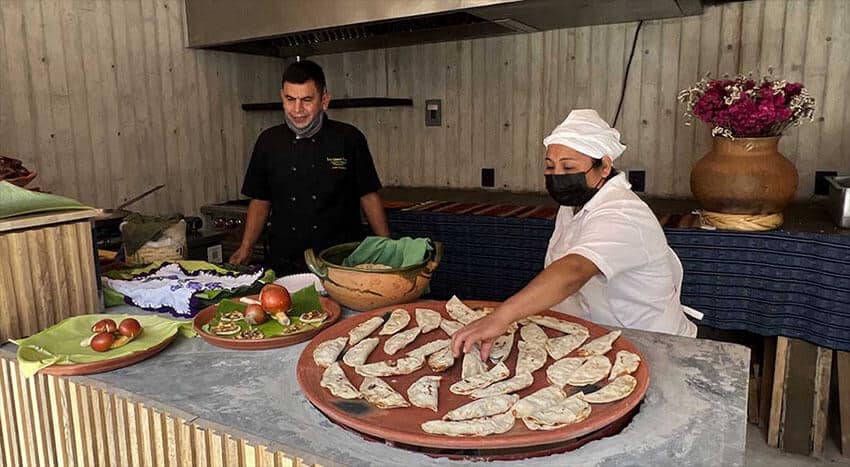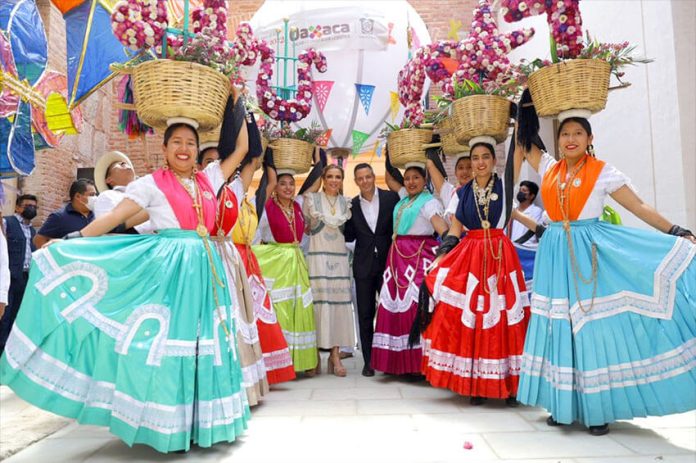Oaxaca Governor Alejandro Murat officially opened on Thursday a new culinary center that will promote the traditional food and cooking methods of the southern state and educate new generations of local chefs.
Located in a former convent in the historic center of Oaxaca city, the Gastronomic Center of Oaxaca (CGO) has 12 establishments that will sell and promote the traditional cuisine of the state’s eight regions, Murat said.
An initiative of the state government, the center will also function as a cooking school affiliated with the Technological University of the Central Valleys of Oaxaca.
In addition to 12 different businesses that will offer typical food from regions such as the Isthmus of Tehuantepec and the Sierra Sur and host culinary events, the 69.8-million-peso (US $3.4 million) CGO has an events hall and an area where aguas y nieves oaxaqueñas (fruit-flavored beverages and shaved-ice treats) as well as mezcal cocktails, craft beer and coffee will be sold.

“This gastronomic center is a gift all the oaxaqueños are giving ourselves because it’s a project that was carried out collectively to celebrate the greatness of our state and also to continue writing the best pages of the history of a Oaxaca with well-being, governability and development,” Murat said.
The governor predicted that the CGO will directly and indirectly generate revenue of 50 million pesos (US $2.4 million) a year. It is expected to attract locals as well as domestic and international tourists.
Alejandro Ruiz, a renowned local chef, said the idea for the CGO came from a visit Oaxaca chefs and officials made to the Basque Culinary Center in San Sebastián, Spain.
“That project had an impact on us,” Ruiz said, adding that it was used as a reference to develop the CGO, in which “local cuisine will be the protagonist.”
He described the building where the CGO is housed – the Convento del Carmen Alto – as a “unique and emblematic space.”
The director of the National Institute of Anthropology and History (INAH) also attended the opening ceremony, during which he remarked that the project had helped to rescue one of the historic edifices of the Oaxaca capital. Diego Prieto also said that the CGO, via its culinary offerings, will promote the customs and traditions of Oaxaca’s different indigenous communities.
“This is a great event because Oaxaca now has another space to celebrate the local food culture,” he said of a state famous for its moles, chapulines (grasshoppers), tlayudas, chocolate, coffee and mezcal, among many other foods and beverages.
“… It’s an honor for me to be present at the inauguration of the center, which without a doubt will become one of the most important [culinary hubs] in the country,” Prieto said. INAH will move into new offices in the convent precinct once additional restoration has been completed, he added.
With reports from El Universal
